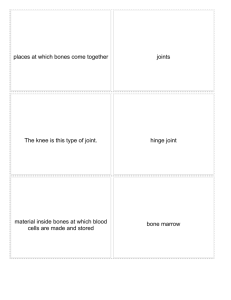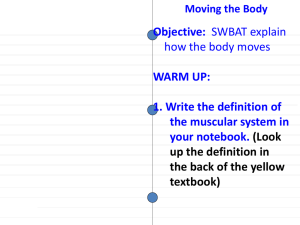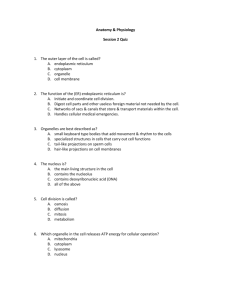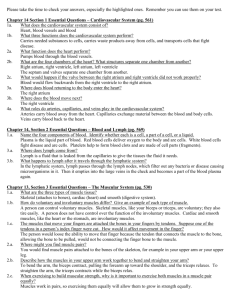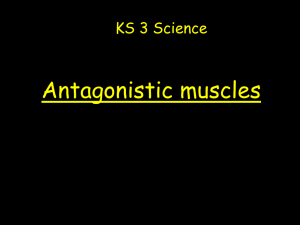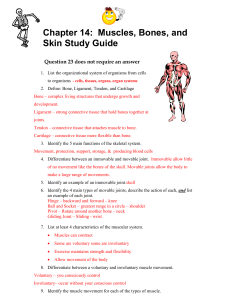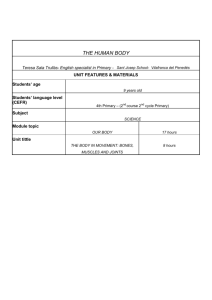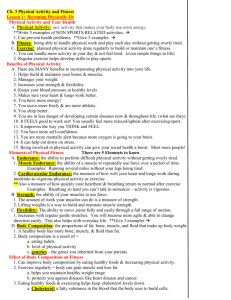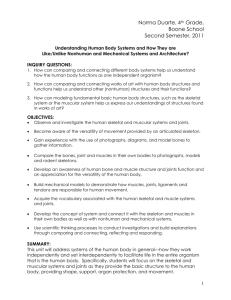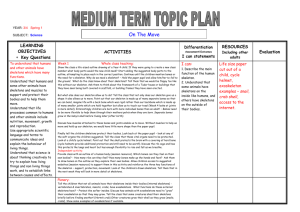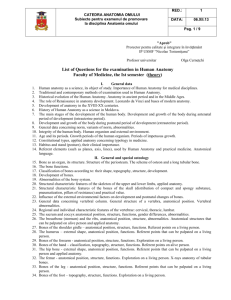Bones Muscles Skin Study Guide
advertisement
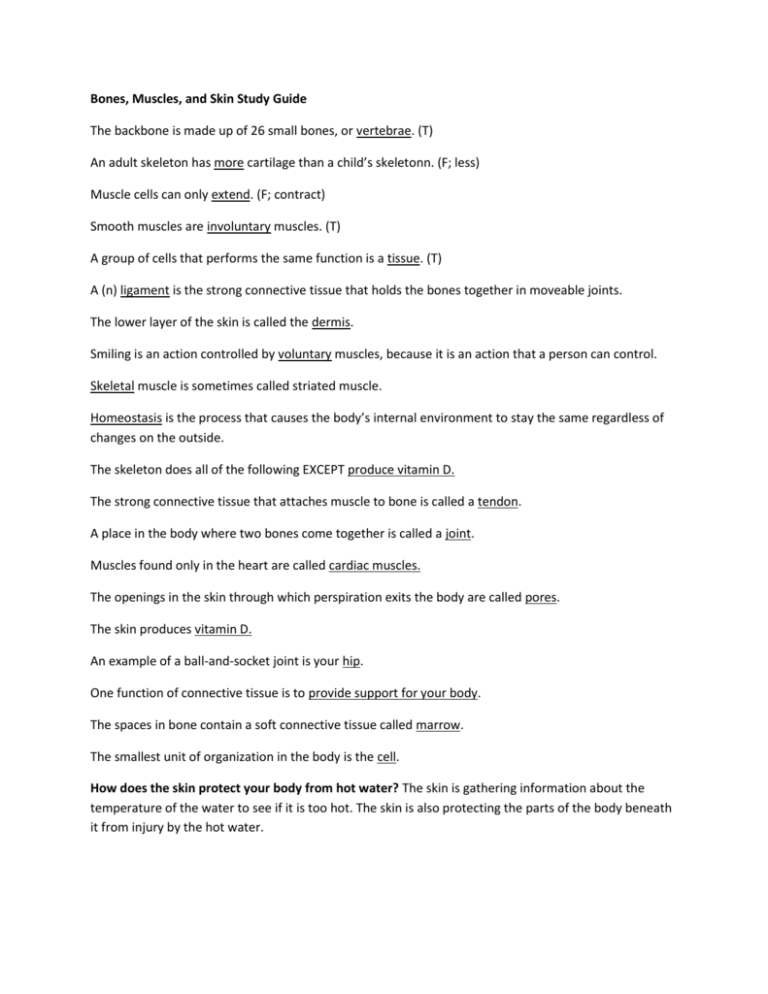
Bones, Muscles, and Skin Study Guide The backbone is made up of 26 small bones, or vertebrae. (T) An adult skeleton has more cartilage than a child’s skeletonn. (F; less) Muscle cells can only extend. (F; contract) Smooth muscles are involuntary muscles. (T) A group of cells that performs the same function is a tissue. (T) A (n) ligament is the strong connective tissue that holds the bones together in moveable joints. The lower layer of the skin is called the dermis. Smiling is an action controlled by voluntary muscles, because it is an action that a person can control. Skeletal muscle is sometimes called striated muscle. Homeostasis is the process that causes the body’s internal environment to stay the same regardless of changes on the outside. The skeleton does all of the following EXCEPT produce vitamin D. The strong connective tissue that attaches muscle to bone is called a tendon. A place in the body where two bones come together is called a joint. Muscles found only in the heart are called cardiac muscles. The openings in the skin through which perspiration exits the body are called pores. The skin produces vitamin D. An example of a ball-and-socket joint is your hip. One function of connective tissue is to provide support for your body. The spaces in bone contain a soft connective tissue called marrow. The smallest unit of organization in the body is the cell. How does the skin protect your body from hot water? The skin is gathering information about the temperature of the water to see if it is too hot. The skin is also protecting the parts of the body beneath it from injury by the hot water. Explain how the biceps and triceps muscles in an arm would work to pull your hand out of hot water? The biceps muscle of the upper arm contracts to bend the elbow, lifting the forearm and hand. As the biceps contracts, the triceps of the upper arm returns to its original length. What is homeostasis? How does stress upset homeostasis? Homeostasis is the tendency of the body to maintain constant internal conditions in spite of an outside change. When stress occurs, the body prepares to take quick action. Your breathing speeds up, your heart beats faster, your muscles tense, and your digestive system slows. All of these changes disturb homeostasis. List three habits that can help you keep your skin healthy. Eat properly. Drink enough water. Limit your exposure to the sun. Keep the skin clean and dry. Why does skin turn darker when exposed to sunlight? Exposure to sunlight stimulates the skin to make more melanin. The more melanin it makes, the darker the skin gets. Familiarize yourself with the four types of joints: pivot, ball & socket, gliding, and hinge; you will have to label each one. What type of connective tissue covers the ends of bones in movable joints? How does this tissue allow the bones in joints to move smoothly over each other? Cartilage covers the ends of bones in movable joints and prevents them from rubbing against each other. Why would a disease that causes the paralysis of smooth muscles be a life-threatening disorder? Involuntary muscles of the digestive tract and respiratory system are composed of smooth muscle. If people contract a disease that paralyzes smooth muscles, they could suffocate as their respiratory system failed or choke as their digestive system failed. How does the skin help the body maintain a constant body temperature? The skin has many blood vessels. When you become warm, these blood vessels enlarge, which increases the amount of blood that flows through them. This allows heat to escape into the outside environment. Sweat glands in the skin also produce perspiration. As perspiration evaporates from the skin, your skin cools. Are bones alive? Explain. Yes, bones are alive because they contain cells and tissues.


